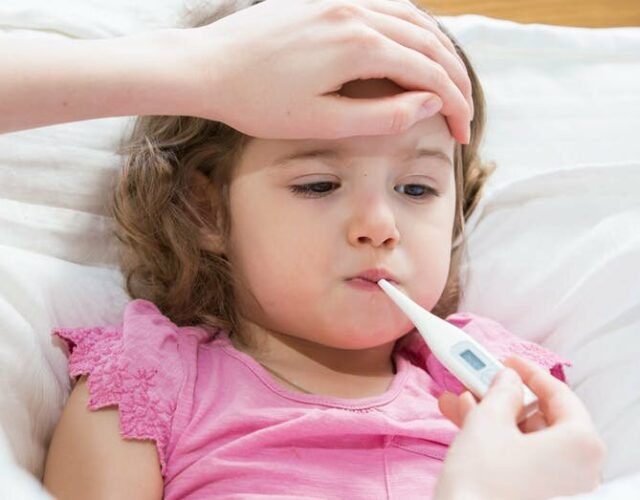It seems like lately I have been discussing ear infections A LOT. It is true that I am a pediatrician and that one of the most common things I see in clinic is, in fact, Ear Infections. So lets take a few minutes and go over some basics about Ears and Infections. And then lets discuss prevention and treatment. Stay with me. It may get boring at times, but this information can help you avoid future copays. As the discussion about the diagnosis and implications of ear infections commence, I see parents wondering about the treasures and hidden tidbits that hide in their children’s ears. Tidbits that they barely understand, cannot see, cannot touch, or capture on iPhones. This sums up the main ingredients creating the parental nightmares. Many mom’s search on amazon for Otoscopes so they can better understand this secretive organ, the Ear. Let’s discuss!
Some Basics:
Middle Ear Infections
- infections occurring in the Middle Ear, which lies behind the Tympanic Membrane or the Ear Drum.
Swimmer’s Ear Infections
- infections occurring in the Ear Canal – this will be addressed in a different post

Note: Water from the pool, showers, bath tubs can get into the ear canal, but cannot get past the Eardrum. This is a sealed membrane that protects the middle and inner ear from the outer world. Thus, one cannot get a middle ear infection from swimming or bath tubs.
Child vs Adult Anatomy
- have you noticed that kids seem to get lots of ear infections, while adults do not?
- if you have ever wondered why this is, here is a simple schematic. If you don’t care, you may be looking at the wrong blog post.
Front View
- in the following drawings the left is the picture of a child’s ear anatomy, and the one on the right is that of an adult
- the outer canal looks relatively similar in both pictures, except bigger for the adult
- the arrows point to the eustachian tube, which in kids is shorter, narrower, and flatter than in adults. This is where genetics play a role. Parents who had tons of ear infections as youngsters, are likely to pass on flatter and narrower eustachian tubes to their offspring, which in turn may lead to lots of ear infections during childhood.
- as children grow into adults, the eustachian tubes enlarge and start angling down, which leads to better drainage of the middle ear, thus less infections.
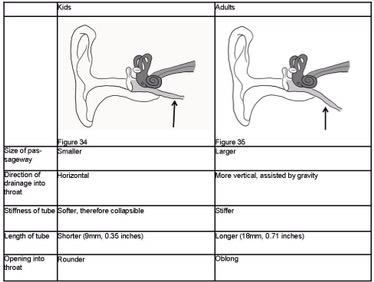
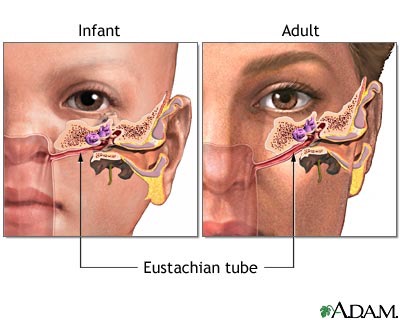
Tonsil and Adenoid View
- observe the placement of adenoids and tonsils in relationship to the eustachian tube opening
- most of us can easily visualize the tonsils, but without ENT equipment, we cannot see the adenoids,

Side View
- the following schematics illustrates how the eustachian tube is connected to the back of the throat and where it drains behind the nasal passages.
- Our bodies make fluid in the ears, eyes, mouth, and so on, daily, to keep cells alive and things working smoothly. Extra fluid drains from the middle ear, down the eustachian tube, down the back of the throat, no big deal. This happens all day long. All is well when there is no swelling or boogers.
Swelling of the Eustachian Tube View
- this slide illustrates blockage of the eustachian tube from swelling/changes in pressure and therefore:
- leading to increased pressure in the middle ear, which leads to pain. Ex: flying in airplanes, going up and down mountains. This pressure change happens in seconds to minutes
- leading to fluid build up in the middle ear. Ex: fluid which is not infected from congestion, colds, sinus infections, allergies. Fluid can build up within minutes to hours in the middle ear. There are some other reasons for eustachian tube dysfunction, but that is beyond the scope of this discussion.
- leading to pus. When fluid is trapped in the middle ear, it creates a dark, moist place, where bacteria loves to reside and cause ear infections. Pus and infection can occur within 12-24hrs. Yes, that fast! It is very frustrating. Your doctor did not miss it or misdiagnose it.
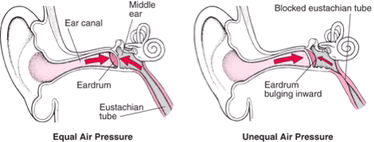
The View from an Otoscope
NORMAL TYMPANIC MEMBRANE OR EAR DRUM
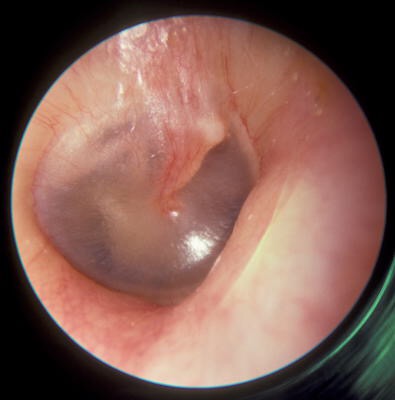
SEROUS EFFUSION – AKA – fluid in the ears
OTITIS MEDIA – AKA – Ear Infection
Schematic Drawing of an Ear Infection
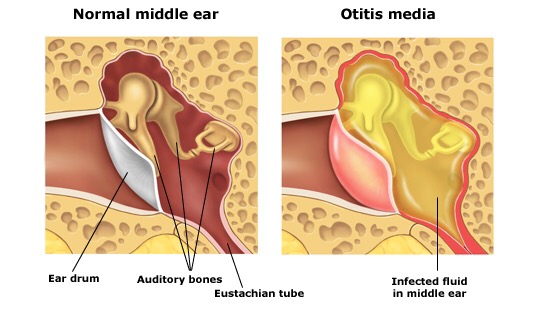
Comparison View of Normal vs. Infected Middle Ear
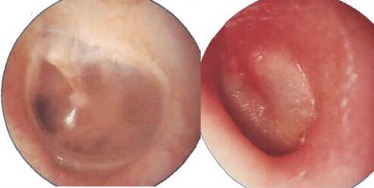
Risk Factors for Otitis Media
- Seasonal Allergies
- Family History and Genetics
- Age: children 6 months to 24 months
- Child care outside the home
- Exposure to cigarette smoke
- Male gender
- Not being breastfed
- Bottle feeding in laying flat position
- Having older siblings
- Using a Pacifier
- Infants with Gastroesophageal Reflux
Mechanism of Action
- Colds, allergies, passive smoke exposure, reflux, and snotty noses cause inflammation in the nose, adenoids, and/or tonsils. This swelling blocks the Eustachian tubes. Furthermore, all the congestion, reflux, and mucous cause a back up of fluid into the Eustachian Tubes, providing the perfect environment for bacteria to take up residence and cause an ear infection.
- Day Care and older siblings create exposure to lots of colds, thus lots of snot.
- Family History contributes short, flat, narrow eustachian tubes that can easily get clogged, swollen, and blocked.
- Pacifiers introduce all kinds of germs and bacteria to the back of the throat.
Prevention of Ear Infections
- Exclusive breast feeding for a minimum of 4-6 months reduces the overall episodes of ear infections. (Breastfeeding and otitis media)
- Keeping noses irrigated with Saline Nose Spray 3 times daily, will keep things flowing smoothly
- Saline Spray kept in the fridge will decrease the swelling inside the nose, and that of adenoids and tonsils
- Suctioning of snot with the Nose Freida keeps nasal passages open
- Keeping the head of bed elevated during sleep can help with drainage and decrease back up of snot
- Humidifiers in bedrooms, can thin the snot and aid with drainage
- BEWARE of Benadryl – though it can help with cough and sleep, it can dry up fluid, thus making it thicker and harder to drain, and in some instances can increase ear infection rate
- Get rid of thePACY. (Pacifiers linked to recurrent ear infections)
- Pacifiers are petri dishes full of bacteria and viruses (yes even those used only at naps and bed time). When a child inserts a pacifier in his/her mouth, the bacteria/viruses travel to the back of the throat and move on up the eustachian tube. Guess what happens next……..
- Soooooo….
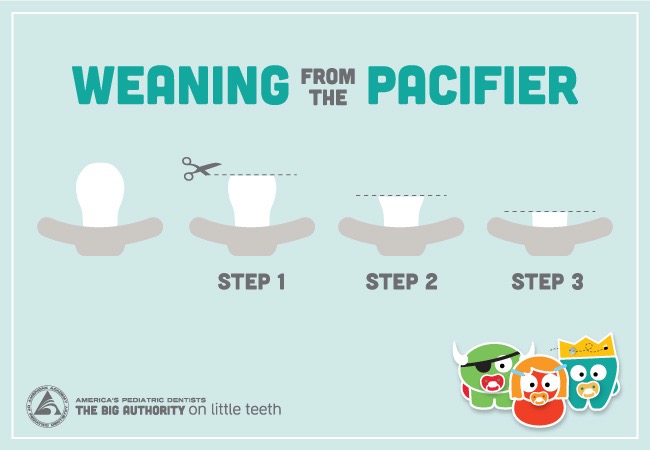
- Stop Smoking around the children. Yes, even if outside the house only. Yes, even if only in the car when the kids are not there. Link: How second and third hand smoke affect the children. Nicotine on clothes, hair, seat belts, car seats, etc gets in the children’s mouth and nose, causing inflammation of the nasal passages, adenoids, tonsils, and within the Eustachian Tubes. Guess what happens next ……
- Taking a Daily Probiotic – VSL3 is my Fave (Costco or Sam’s Club), or get one with 6 or more types of bacteria and over 10 billion colonies. No, yogurt is not enough. Study linking probiotics to decrease in illnesses in day-care children. Probiotics build up the immune defense in your gut which is connected to the back of the throat, nasal passages, and middle ear. Thus a stronger army is located in strategic places to defend against the enemy: viruses and bacteria.
- Daily Local Honey – 1tsp – in kids OLDER then 1 yrs old, can help with decreasing allergy symptoms/preventing allergy symptoms. Remember allergies cause snot and inflammation in the back of the throat. Conclusion extracted from studies done on Birch Tree Pollen
- Fruits and Veggies at Every Meal. Keep carbs such as bread, crackers, gold fish, pasta, cookies, and other snacks to a minimum. Note these are toddler faves. These carbs turn to sugar and sugar feeds viruses and bacteria and decreases the effectiveness of the immune system. If your child needs more Fruits and Veggies in their diet, try Juice Plus. Dr. Sears’ recommendation of Juice Plus
- Food allergies may play a role in recurrent ear infections, so speak with your doctor about elimination diets, how to do it, how long, and if your child is a candidate. Food allergies have been shown to be linked to recurrent fluid in the middle ear (serrous otitis media). Elimination diet of the offending agent can decrease build up of fluid in the middle ear, which in turn can reduce the risk of ear infections.
- Daily Vitamin D – preliminary studies show that children with recurrent infections have lower levels of vitamin D, then those who do not. Aim for 400 International Units Daily – Faves are Carlson Vitamin D drops and Now Foods Vitamin D Drops
- Prevnar Vaccine has been shown to decrease the risk of ear infections – this pneumococcal vaccine is administered at 2,4,6,and 12 months of age. Get it done!
- Bottle feeding with ventilated infant bottles while having the infant in reclined position.Get rid of bottles at 12-15months old.Infant bottle feeding and the link to ear infections
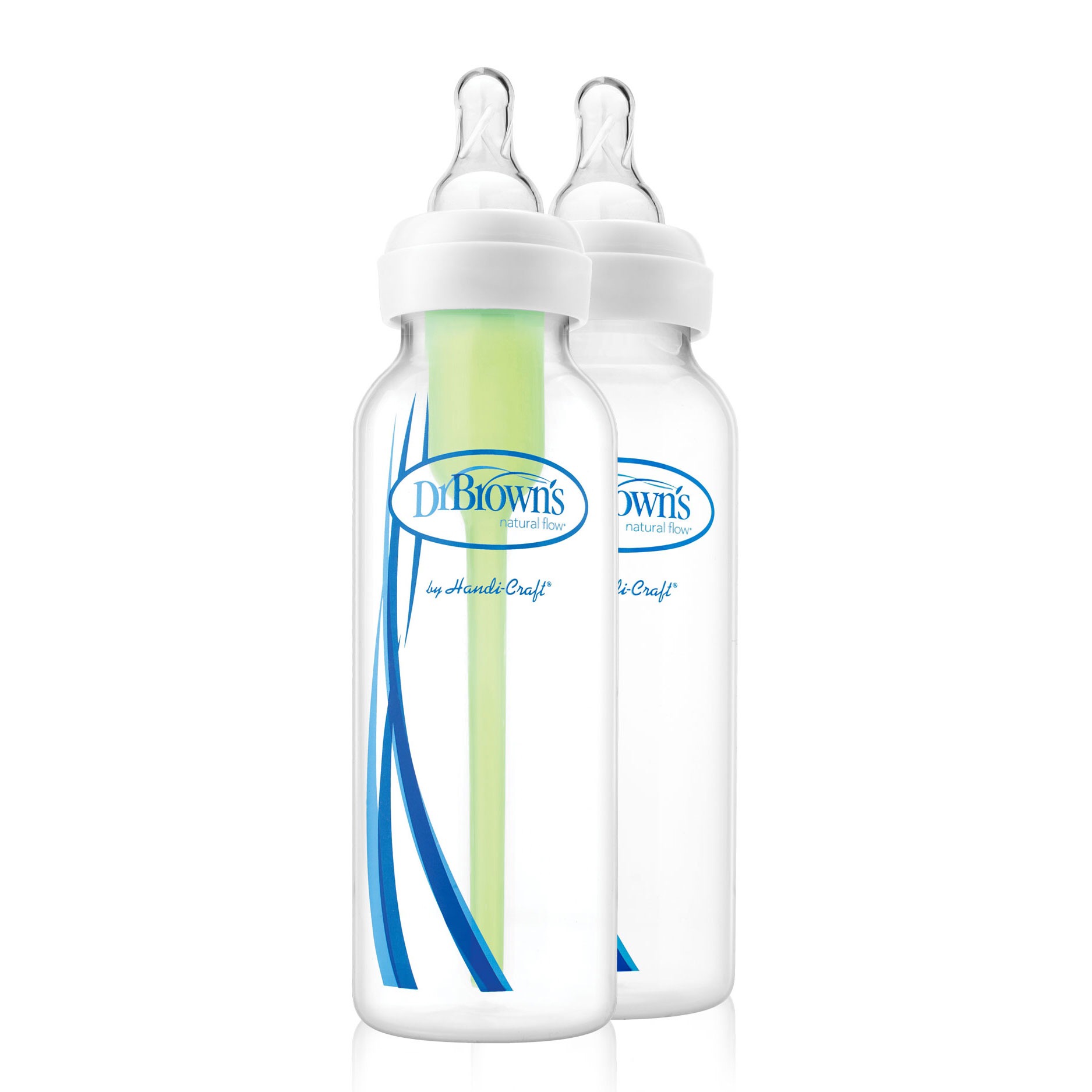
img_7799
- Belladonna – one study showed that children who took daily homeopathic preparations of Belladonna had fewer infections, and if they did get an infection, it lasted shorter then those who did not take this preparation – NOTE Herbal Belladonna is TOXIC, speak with your doctor about Homeopathic Preparations
- Echinacea (Echinacea purpurea) has not been studied in the treatment or prevention of ear infections. Some physicians may recommend this however. If you are allergic to ragweed or pregnant do not take this herb.
- Nasal Steroids – such as Flonase, Nasacort, Nasonex – Have been shown to decrease swelling of adenoids, nasal passages, and sometimes tonsils in those with allergy symptoms and in some children with snoring at night. Speak with your doctor if this is right for your child.
- Xylitol has been shown to reduce ear infections, however, I do not recommend it because it must be given 5 times a day to be effective. Kids can barely brush their teeth 2 times a day. Enough said.
Treatment of Ear Infections
- Antibiotics are used to treat ear infections in those less then 6months old.
- The Academy of Pediatrics recommends Watchful Waiting for 48-72hrs in those children over 6months old who are not very ill, do not have no chronic medical problems, do not have a ruptured tympanic membrane, or do not have a clear infection.
- 80% of ear infections in healthy children resolve without antibiotics within 2-7 days
- children who get antibiotics for ear infections, have a much higher risk of recurrence of ear infections and antibiotic use, compared to children who have never had antibiotics
- early antibiotic use in children has been linked to Inflammatory Bowel Disease
- pain can and should be controlled with Ibuprofen for 48-72hrs as needed. Ibuprofen is a potent anti-inflammatory. Remember that the eustachian tube is swollen and the middle ear is full of pus. If swelling is decreased, the eustachian tube opens, and pus/fluid will drain out of the ear in most cases. Pain from ear infections is caused by the pressure build up in the middle ear.
- rinse the nose with Saline Spray and suction boogers. Keeping the nasal passage open will help with drainage from the ears.
- If ear pain does not resolve in 48-72hrs or it becomes severe despite management with Ibuprofen and nasal irrigation, then antibiotics are recommended.
- Herbal ear drops (calendula officials, Hypericum perfoliatum, Verbascum thapsus, Allium sativum) have been shown in few studies to help relieve pain. Do not use oily ear drops the day of a doctor’s appointment because it will obstruct the view to the ear drum.
-
Homeopathic Remedies
- there aren’t any medical studies at this time showing a benefit over placebo in the treatment of ear infections (Homeopathic medicine for treatment of common ailments, literature review)
- these should be used under the guidance of homeopathic doctor who has examined and knows your child well
- some treatments used – Aconitum, Belladonna, Chamomilla, Hepar Sulphuricum, Lycopedium, Mercurius, Pulsatilla, Silica
-
Surgical Interventions:
- Tympanostomy Tubes (Drainage Tubes) are used to treat recurrent ear infections, resistant ear infections not responsive to antibiotics, persistent fluid in the middle ear that is interfering with hearing and speech.
-
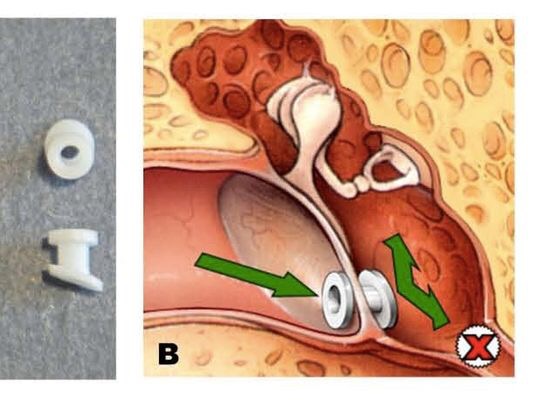
- this requires general anesthesia
- the procedure is done by an Ear Nose and Throat (ENT) Professional
- tubes are placed in the tympanic membrane so fluid/pus can drain out of the middle ear and into the ear canal
- tubes do not eradicate ear infections, they generally decrease the rate of ear infections by providing drainage of fluid from the middle ear into the ear canal. Furthermore, tubes are a path of antibiotic drops to travel to the middle ear and eradicate the infection without the use of oral antibiotics.
- tubes usually fall out within 6months to 1 year
- Removal of Adenoids and Tonsilsmay be recommended for some children. This is procedure may be discussed when these tissues are large and are providing a constant obstruction to the Eustachian Tube (see diagrams above)
References not otherwise mentioned within the article.
- AAP guidelines for treatment of otitis media
- Effect of smoke exposure on otitis media recurrence
- Otitis Media – University of Maryland
- Complementary and alternative medicine for the treatment of Otitis Media
- Complementary and alternative treatment options for otitis media
- Vitamin D levels in children with recurrent otitis media
- Fluticasone and its effectiveness at reducing nasal obstruction
- Nasal congestion: etiology, evaluation, and treatment
- Antibiotic use and the development of IBD in children
- Photos: theoilsofjoy.blogspot.com, www.everydaymedicine.com, www.slideshare.net, www.gnosnoring.com, me.hawkelibrary.com, eentblueprintnotes.blogspot.com, otitismedia.hawkelibrary.com, www.entusa.com, www.earnosethroatdoctor.net, blis.co.nz, www.ent-surgery.com.au, www.westsidehn.com,
Websites for Purchasing Products:
- ThriveMarket.com – online healthy grocery store
- Amazon – of course
- v-f.juiceplus.com




